Frequently Asked Questions
What is Autism?
The terms Autism or Autism Spectrum Disorder (ASD) are synonymous terms for a group of complex disorders of brain development. Autism is characterized by difficulties in social interaction, verbal and nonverbal communication, and repetitive and rule bound behaviors. Autism statistics from the U.S. Centers for Disease Control and Prevention (CDC) identify that 1 in 44 children has been identified with an autism spectrum disorder.
What is ABA?
ABA stands for Applied Behavioral Analysis. ABA analyzes individual child behaviors and skills in order to determine why a child may be exhibiting behaviors or struggling to perform a particular skill. The Lead Therapist and Clinical Coordinator then use this analysis to develop a treatment plan that teaches more appropriate behaviors and skills. Most ABA companies have children sitting at a table learning skills. Self stimulatory and special interests are stopped and children are taught skills to fit into a neurotypical world. Autism and Behavior Center is different. We embrace neurodiversity. We embrace the uniqueness of every individual child and family. We still use behavior analysis but in a way that isn’t looking at behaviors as bad or maladaptive but rather simply as a means to communicate. At ABC, we help families learn to recognize the underlying reason for behaviors and teach replacement behaviors.
Who will work with my child?
All children work directly with PhD and Master Level Clinicians, Dr. Wegner and Kimberly Sattler.
How often will my child receive therapy?
The number of therapy hours and type of therapy each child needs is prescribed by our clinical psychologist based on each individual’s challenges and strengths. Most children receive 5-15 hours of therapy per week.
Where does therapy take place?
Autism and Behavior Center is a clinic based program. All sessions are held at the Autism and Behavior Center located just 1 mile east of Hwy 53 & Clairemont Ave in Eau Claire, Wisconsin.
How long is each session?
Sessions are generally 2-4 hours in duration.
What does a session look like?
Sessions vary depending on an individual child’s needs but a typical session includes activities combining sensory, play, motor, social emotional, language, and self-help skills. These programs differ based on a child’s individual age and developmental level. Here are some examples for a 2-3 year old autistic child:
Social Skills: Social Skills are taught within a natural context; meaning that rather than sit at a table and point to pictures or talk about rules for social engagement, staff and children engage in social activities. Staff provide scaffolding and prompts to help the child recognize his/her role as a social partner. This may be working together to build with legos, taking turns playing a game, or playing side by side with toys.
Language Development: If possible, language skills are taught within a natural environment. This means that rather than sit at a table and teach a child to say "cracker" when shown a picture of cracker; staff wait until the child is hungry and then teach the child not just the label for cracker but how to communicate that he or she wants a cracker. Language is taught as a typical child learns language. This means that rather than teach a memorized scrip "I want cracker please"; the child first just has to say "cracker". then a verb may be added ("eat cracker" or "open cracker"). For some children this may mean using a sign, a picture, or an AAC (Alternative Augmentative Communication) Device like a button, ipad, or tablet.
Social Emotional Programs: Social Emotional programs aim to nurture and develop a child’s confident and ability to cope with big emotions. Staff may model using behavioral regulation strategies when they are upset because they lost a game or were told “no”.
Play: Everything at ABC is based on play. Play is a child’s job. Play activities include dramatic play, small world play, sensory play, books, puzzles, and whatever may be a child’s unique and special interests. If that means the child opens and shuts doors or takes lids off containers to dump objects, staff create play materials that provide the same.
Motor Skills. Programming may address motor skills including both Fine Motor (stringing beads, cutting, drawing) and Gross Motor Skills ( running, jumping, throwing/catching ball, balancing, etc.)
If you’re interested in seeing examples of play or want more information regarding autism, follow Dr. Wegner on Instagram @Brody.the.Lion 💙 Brody the Lion is the Children’s Book Series published by ABC.
Who pays for therapy?
If you have private insurance, you should first contact your insurance company to determine what benefits will be covered.
If you do not have private insurance available to you, or if your insurance policy does not cover ABA, Medicaid covers ABA therapy under the Behavioral Treatment Benefit. The Behavioral Treatment Benefit through Medicaid is available to children who receive Badger Care as well as those children who qualify for Medicaid through Katie Beckett or SSI.
Some parents whose children do not have insurance and do not qualify for medicaid choose to privately pay for services.
What is the parent/caregiver’s job in Therapy?
We encourage parents and caregivers to be very involved in their child’s programs. We have experience working with a very wide variety of families and can individualize our interactions to make it successful for everyone. Ways that parents should be involved include:
Communicating on a regular basis with the team about and priorities or concerns they may be having regarding programming.
By practicing the skills their child is learning and applying in daily life.
Attending team meetings and parent training sessions
Ensuring that their child is available to take advantage of the full amount of therapy hours recommended by the psychologist.
Ensuring that children are well rested and ready for each therapy session
